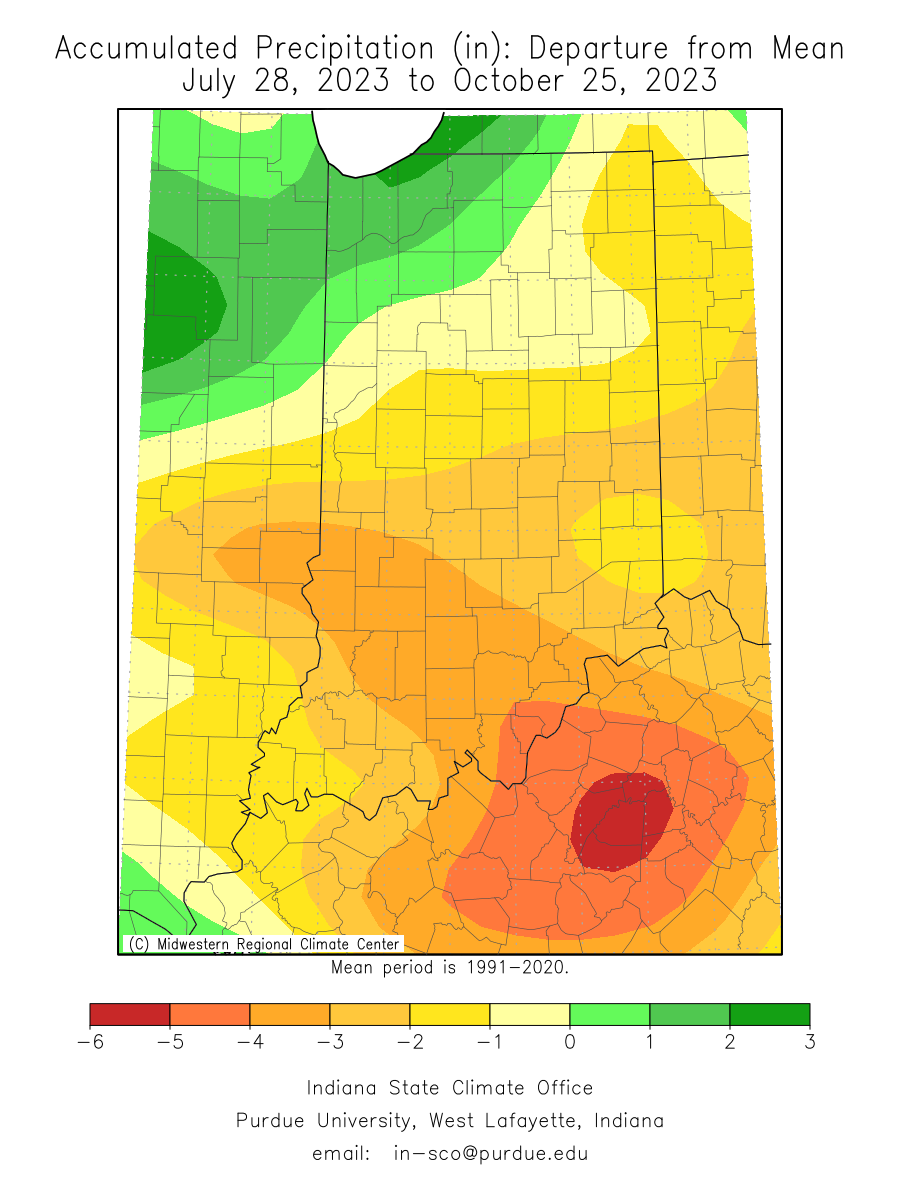
Recent weather maps

Recent weather maps
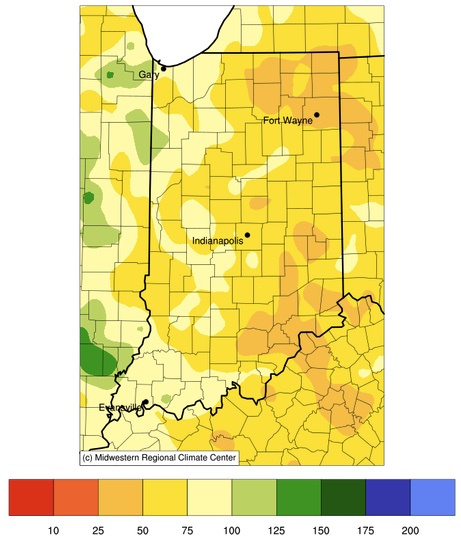
To say the last few months have been dry is a bit of an understatement. Since August 1st, only a sliver of Newton and Benton counties (northwest Indiana) and the tiniest speck of Warrick County (southwest Indiana) have had above-normal precipitation.
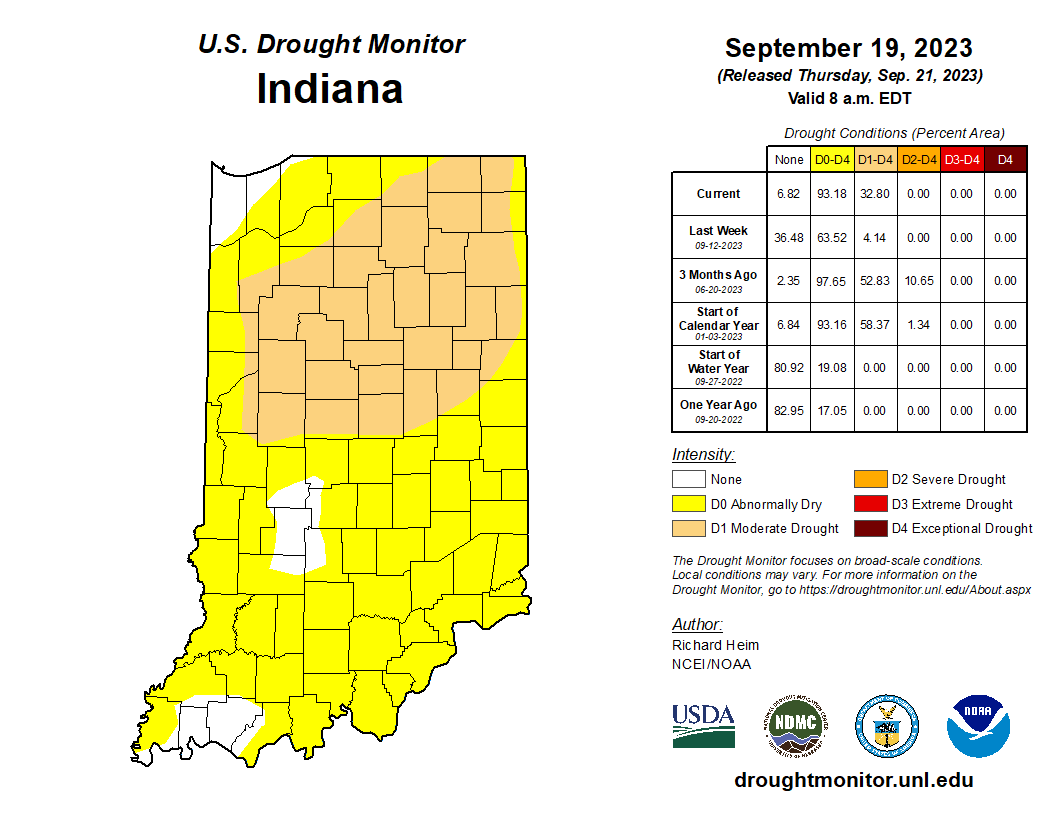
Our dry spell continues. Sure, there’s been a few passing showers, but Indiana is quickly seeing impacts magnify from the lack of rain.

The fall crisp was in the air this morning (9/13), so cool that I had to grab that sweatshirt I bought in mid-August while getting my kiddo on the bus.
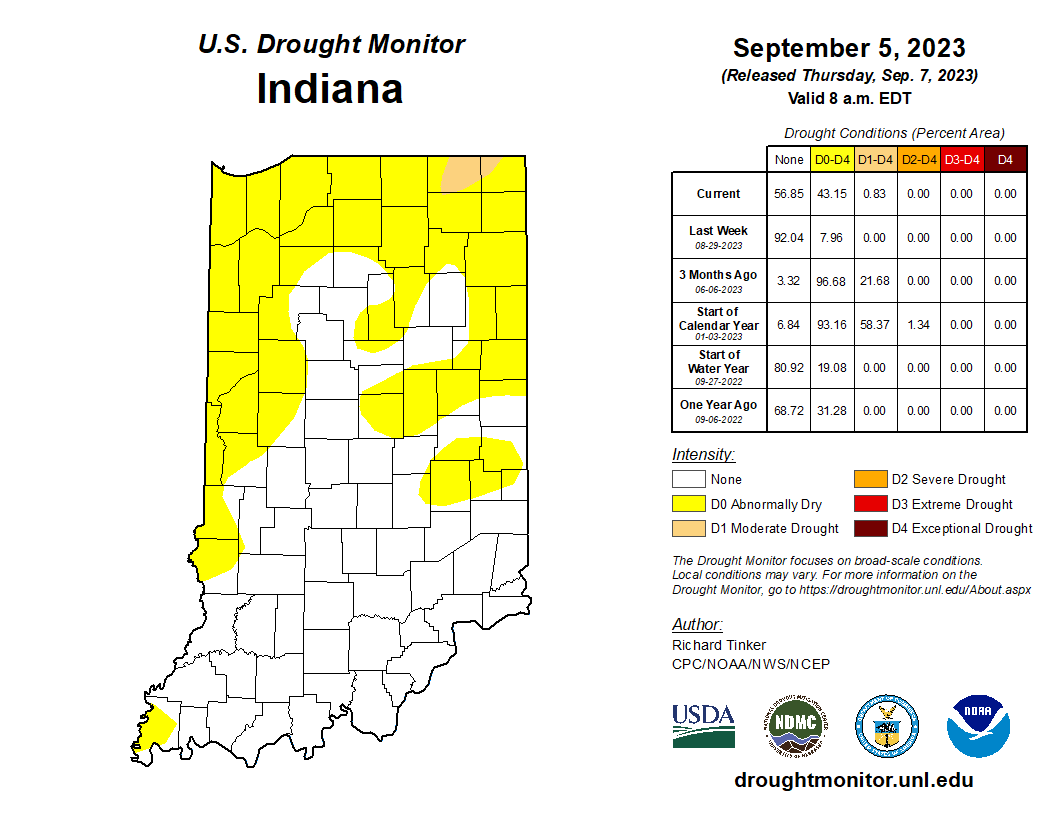
Wednesday, September 6th was the first day in what seemed like a long, long time, that rain fell across most of Indiana.
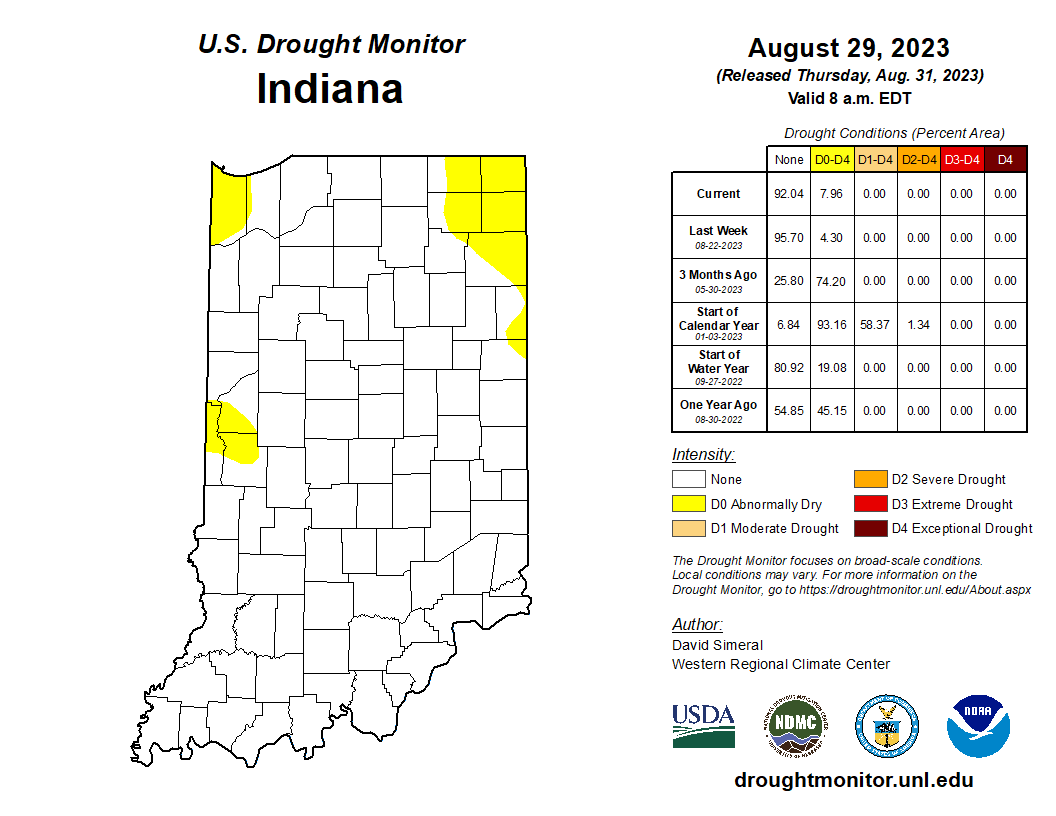
We were on a good stretch where consistent and sometimes too much rainfall eliminated drought throughout Indiana.
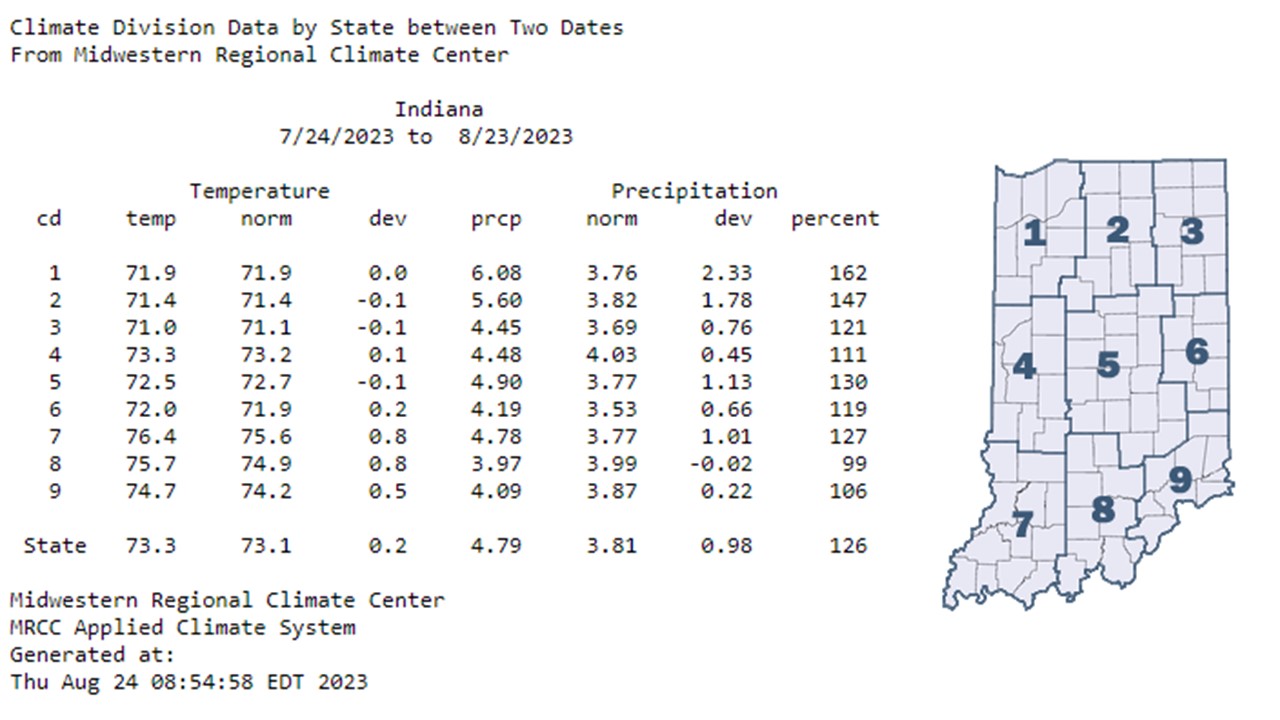
Have you ever heard of the song by Glenn Frey, “The Heat Is On”? No pun intended, but the heat is certainly on!

Over the last 30 days (July 18-August 15), the state average temperature was 73.5◦F, which was essentially normal.
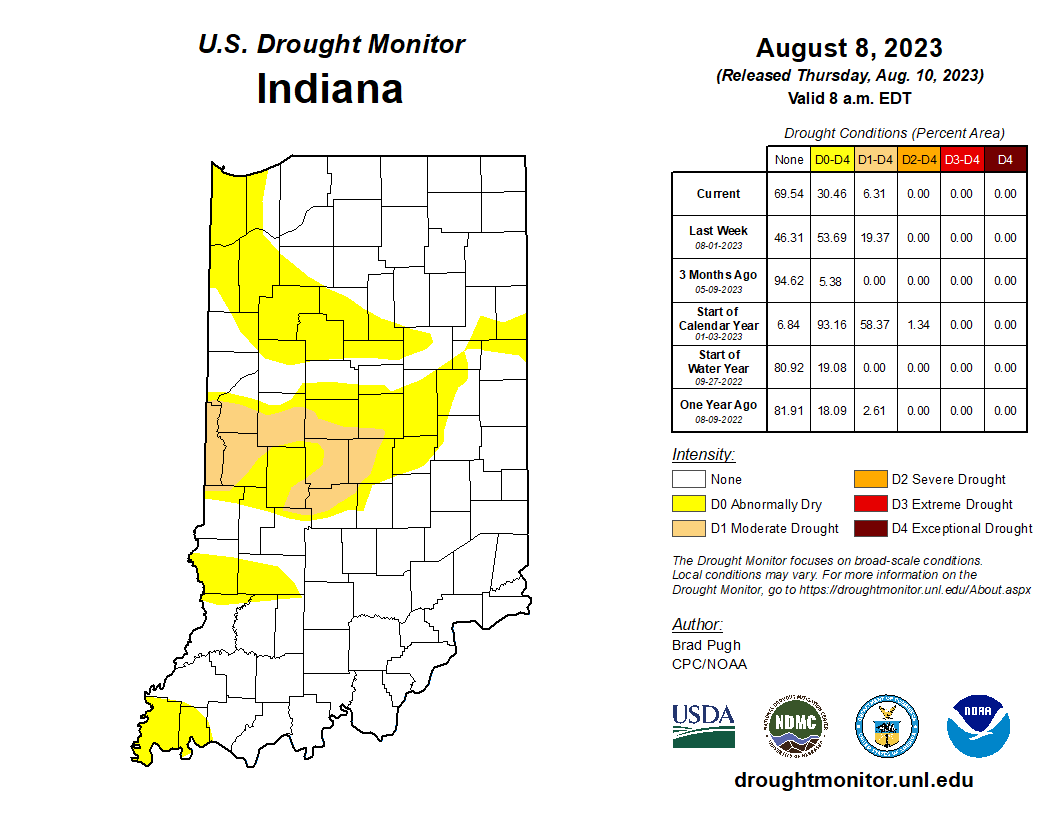
Drought and abnormally dry conditions continue to improve across most of Indiana (Figure 1).
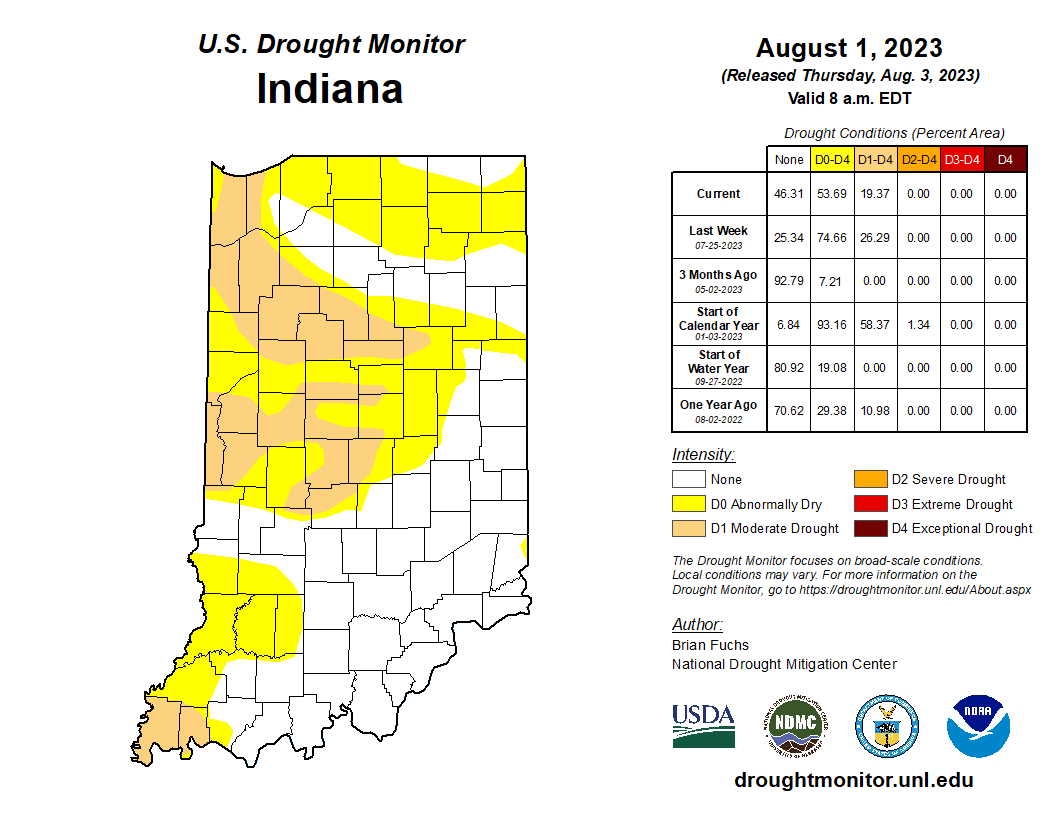
Recent precipitation events have allowed periodic rainfall to hit most places across Indiana.
© 2024 Purdue University | An equal access/equal opportunity university | Copyright Complaints | Maintained by Pest&Crop newsletter
If you have trouble accessing this page because of a disability, please contact Pest&Crop newsletter at luck@purdue.edu.